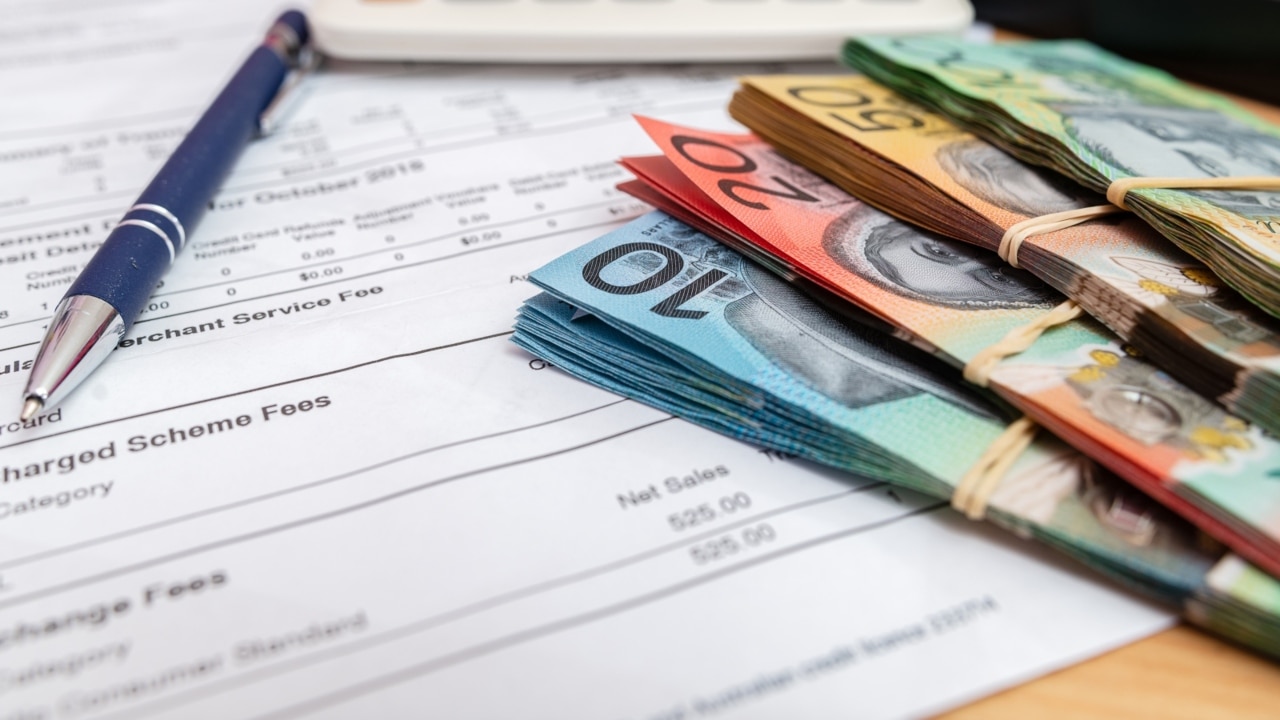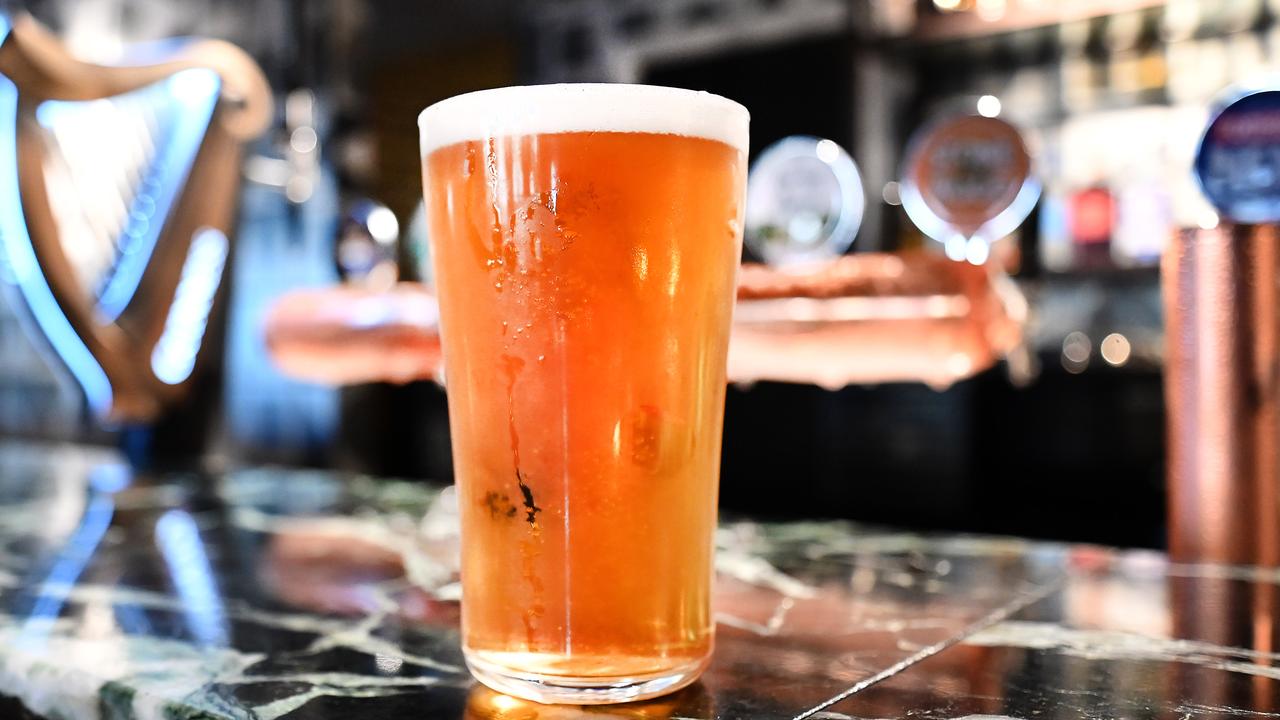Millions of Aussies waiting for $2900 tax refund to pay bills
Millions of Australians are desperately waiting to lodge their tax return to get their $2900 refund for one specific reason.

Millions of Australians struggling with rising cost of living are waiting to lodge their tax returns so they can use the cash to pay for bills and other essential expenses, new research has found.
The survey of more than 1000 respondents by comparison website Finder found nearly one in four (23 per cent) said the end of financial year cash injection was “very important” to their budgets, with a worrying 12 per cent saying it was “critical” to their financial health.
According to the research, one in seven (15 per cent) — equivalent to three million people — said they would be using the refund to pay for household bills, while 5 per cent will be putting it towards their mortgage.
Finder money expert Rebecca Pike said the cost-of-living crisis had caused an over-reliance on tax returns.
“There’s a cash flow crisis and many are counting on their tax return to address everyday expenses and get them out of a tight spot,” she said in a statement. “If you’re waiting for your tax return to bail you out, you are likely living beyond your means.”
More than one third (36 per cent) of respondents plan to put their refund into savings.
With the average tax refund of $2900, that could equate to $20.8 billion being put into savings this tax season, according to Finder.
“If you get a tax refund this year, it can be tempting to spend it all,” Ms Pike said.
“But if you invest it strategically, you can generate passive income for years to come. Put it in a high-yield savings account or jumpstart your investing journey to build wealth.”
Finder’s survey found 4 per cent would use their tax return to pay off credit card debt, while 5 per cent plan to use it on a holiday and just 3 per cent said they would go shopping.
“We know many people are doing it tough this year,” Australian Taxation Office (ATO) Assistant Commissioner Tim Loh said earlier this month.
“We expect fewer people will receive a refund or may receive smaller refunds than they were expecting, and more may have tax debts to manage.”

How to get the biggest refund
Tax agents say you are unlikely to get the highest return by relying on the pre-filled data from the ATO.
Though it might be the quickest way, taxpayers should know that the pre-filled information is not always the most reliable according to H&R Block’s director of tax communications Mark Chapman.
“During July in particular, many taxpayers are shocked to notice plenty of their income information doesn’t show up when they download data from the ATO,” he said.
“This is because many third parties don’t pass on the data they are legally required to provide until well into July and in some cases August.”
Mr Chapman urged Australians to use their own income statements rather than just relying on the ATO’s data, as the legal burden is on the individual to make sure the information is correct.
The ATO has also overhauled the way taxpayers claim work-from-home deductions this year, introducing a more streamlined “fixed rate method” to replace the popular “shortcut method” first introduced during Covid.
Nearly five million people claimed work-from-home deductions last year. In 2020-21 there were $4.14 billion worth of work-from-home deductions, at an average of around $830.
For expenses incurred from July 1 2022, you’ll be able to claim 67 cents per hour while working from home, an increase from the standard rate of 52 cents per hour.
However, there are also new rules that come with those changes that may catch some people out, according to managing director of Impact Taxation and Financial Services Brenda Ferguson.
“The major change is that people actually need to a really detailed daily diary, if they don’t do that, then they won’t be able to use the fixed rate method,” she said.
The diary must also be kept while the person is working, so you won’t be able to go back and create it at a later date.
However, those who fill out time sheets or have rosters will be able to use those as evidence that they were working from home instead of a diary.
Not only do the new rules change the documentation requirements, they also change what can be claimed on the side.
“Also the new fixed rate method already includes a mobile phone and internet so on top of that they can’t claim mobile phone and internet consumables,” Ms Ferguson said.
“One other thing is, the old method included wear and tear of office furniture, but the new 67 cents per hour method doesn’t include office furniture, so that‘s actually a little bit of good news for taxpayers because that means they can claim home office furniture separately on the top.”

Who the ATO is targeting
It comes after the ATO earlier this month revealed its three key focuses this year — rental property deductions, work-related expenses and capital gains tax.
Assistant Commissioner Tim Loh said the ATO was continuing to prioritise areas where it often sees mistakes being made.
“Within these areas, we have identified common mistakes, and are particularly focused on addressing these and supporting taxpayers and registered tax agents to get their claims right this year,” Mr Loh said in a statement.
According to the ATO, a review of income tax returns showed nine out to 10 rental property owners were getting their return wrong, often leaving out rental income or with mistakes being made with property-related deductions, such as overclaiming expenses or claiming for improvements to private properties.
The ATO said it was particularly focused on ensuring rental property owners understand how to correctly apportion loan interest expenses, where part of the loan was used for private purposes.
“You can only claim interest on a loan used to purchase a rental property to earn rental income — don’t forget, if your loan also includes a private expense, such as for a new car or a trip to Bali, you can only claim an interest deduction for the portion relating to producing your rental income,” Mr Loh said.
The ATO has sophisticated data matching capabilities which include rental property-related data and has recently implemented a new residential investment property loans data matching program.
“This is just one example of the work we are doing to help you get your return right and make sure people are claiming expenses correctly,” Mr Loh said.
For capital gains tax (CGT), which comes into effect when you dispose of assets such as shares, crypto, managed investments or properties, taxpayers must calculate a capital gain or loss for each asset unless an exemption applies.
“Generally, your main residence is exempt from CGT, however if you have used your home to produce income, such as renting out all or part of it through the sharing economy, for example Airbnb or Stayz, or running a business from home, then CGT may apply,” Mr Loh said.
— with NCA NewsWire






